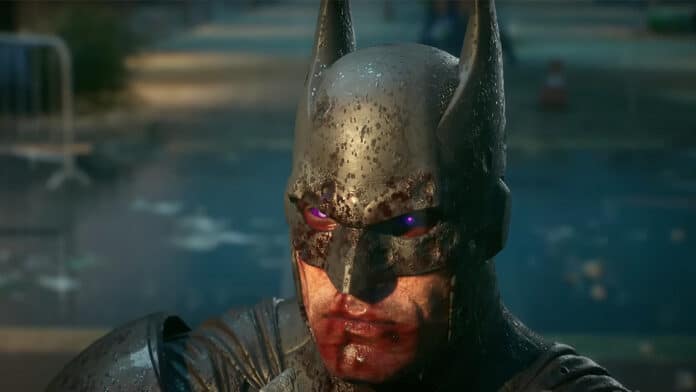Suicide Squad: Kill the Justice League serves as a pivotal narrative in the Arkhamverse, continuing the complex storyline established by Rocksteady Studios.
The game, set as a sequel to Batman: Arkham Knight, embarks on a bold narrative choice by concluding the caped crusader’s journey in a manner that has ignited discussions and varied reactions from fans and critics alike.
The Arkhamverse context
The Arkham series, known for its deep narrative and character development, left Bruce Wayne’s fate ambiguously open at the end of Arkham Knight.
The game hinted at Batman’s psychological evolution, suggesting a transition beyond the Bruce Wayne persona, utilizing Scarecrow’s fear toxins to become a more formidable version of the vigilante.
This backdrop sets the stage for his appearance in Suicide Squad: Kill the Justice League, where his story takes a dramatic turn.
Rocksteady’s narrative choices
Suicide Squad: Kill the Justice League attempts to bridge the gap between Arkham Knight and its own storyline, offering explanations for Batman’s activities in the intervening years.
According to in-game lore, Batman had revealed himself as Bruce Wayne, faking his death, and later joining the Justice League, expanding his vigilance beyond Gotham.
This narrative choice aims to provide closure to his story while setting up the Suicide Squad’s anti-heroic quest within the larger DC universe.
Also Read: Suicide Squad: Kill the Justice League summary and ending explained
Batman’s death: The climactic moment
In Suicide Squad: Kill the Justice League, Batman (who is under Brainiac’s mind control) is captured from one of his safe houses.
The Squad delivers him to Luthor, who uses his research to create Gold Kryptonite to defeat Superman.
With his usefulness running out, Harley shoots a battered and bruised Batman, killing him on a park bench.
This act draws out the evil Superman to their location.
Controversy
The decision to set Kill the Justice League within the Arkhamverse brought up several questions about continuity and the direction of Batman’s character arc.
Fans who were satisfied with the ambiguity of his fate in Arkham Knight or hoped for a continuation of his storyline found the manner of his death to be somewhat jarring.
It also a consensus online that the game does not do justice to the character’s legacy within the Arkhamverse.
Sure, the scene is seen as a fulfilment of the game’s titular promise.
However, it is also a controversial narrative choice, considering Batman’s illustrious history, expectations set by previous games, and voice actor Kevin Conroy’s legacy.

